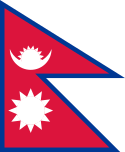Igrzyska Azjatyckie 1978
| |||
| |||
| Stolica igrzysk | Bangkok | ||
| Liczba ekip | 25 | ||
| Liczba sportowców | 3842 | ||
| Liczba konkurencji | 21 | ||
| Otwarcie | 9 grudnia 1978 | ||
| Zamknięcie | 20 grudnia 1978 | ||
| Oficjalne otwarcie | Król Bhumibol Adulyadej | ||
| Stadion | Stadion Suphachalasai | ||
| Zwycięzca klasyfikacji medalowej: | |||
VIII Igrzyska Azjatyckie – zawody sportowe państw azjatyckich, które odbyły się w dniach 9-20 grudnia 1978 w stolicy Tajlandii, Bangkoku. Były to trzecie igrzyska azjatyckie odbywające się w tym mieście. Poprzednio rozgrywano je tu w latach 1966 i 1970. W programie igrzysk znajdowało się 21 dyscyplin. Była to ostatnia edycja igrzysk azjatyckich niezorganizowana pod egidą Olimpijskiej Rady Azji[1].
Uczestnicy igrzysk
W VIII Igrzyskach Azjatyckich wzięło udział 25 reprezentacji, będących członkami Międzynarodowego Komitetu Olimpijskiego.
Konkurencje sportowe na IA 1978
VIII Igrzyska Azjatyckie rozgrywano w 21 dyscyplinach sportowych.
|
|
|
Klasyfikacja medalowa
| Miejsce | Reprezentacja | Łącznie | |||
|---|---|---|---|---|---|
| 1 | 70 | 58 | 49 | 177 | |
| 2 | 51 | 55 | 45 | 151 | |
| 3 | 18 | 20 | 32 | 70 | |
| 4 | 15 | 13 | 15 | 43 | |
| 5 | 11 | 11 | 20 | 42 | |
| 6 | 11 | 11 | 6 | 28 | |
| 7 | 8 | 7 | 18 | 33 | |
| 8 | 4 | 4 | 9 | 17 | |
| 9 | 4 | 4 | 6 | 14 | |
| 10 | 2 | 4 | 6 | 12 | |
| 11 | 2 | 1 | 4 | 7 | |
| 12 | 2 | 1 | 3 | 6 | |
| 13 | 1 | 3 | 5 | 9 | |
| 14 | 1 | 1 | 0 | 2 | |
| 15 | 1 | 0 | 0 | 1 | |
| 16 | 0 | 3 | 3 | 6 | |
| 17 | 0 | 2 | 3 | 5 | |
| 18 | 0 | 0 | 2 | 2 | |
| 19 | 0 | 0 | 1 | 1 | |
| Razem | 201 | 199 | 226 | 626 | |
Przypisy
- ↑ 1982: High On Drama (ang.)
Linki zewnętrzne
| ||||||||||||||
Media użyte na tej stronie
Autor: https://phabricator.wikimedia.org/diffusion/GOJU/browse/master/AUTHORS.txt, Licencja: MIT
An icon from the OOjs UI MediaWiki lib.
Autor: https://phabricator.wikimedia.org/diffusion/GOJU/browse/master/AUTHORS.txt, Licencja: MIT
An icon from the OOjs UI MediaWiki lib.
The national flag of Kingdom of Thailand since September 2017; there are total of 3 colours:
- Red represents the blood spilt to protect Thailand’s independence and often more simply described as representing the nation.
- White represents the religion of Buddhism, the predominant religion of the nation
- Blue represents the monarchy of the nation, which is recognised as the centre of Thai hearts.
bendera Indonesia
The Flag of India. The colours are saffron, white and green. The navy blue wheel in the center of the flag has a diameter approximately the width of the white band and is called Ashoka's Dharma Chakra, with 24 spokes (after Ashoka, the Great). Each spoke depicts one hour of the day, portraying the prevalence of righteousness all 24 hours of it.
Łatwo można dodać ramkę naokoło tej grafiki
The Egyptian flag (1972-1984). Also the flag of Libya (1972-1977) and Syria (1972-1980), when the three countries formed the nominal “Federation of Arab Republics”. (For a map of the federation, see Image:Esl.PNG.)
The Arab text in the scroll held by the “Golden Hawk of Qureish” reads Arabic اتحاد الجمهوريات العربية, ittiħād al-jumhūriyyāt al-`arabiyya, i.e. the Federation (literally “Union”) of Arab Republics — in a quasi-Kufic script (in its original form, with a very ornamental letter dal د).
Flag of Iraq, 1963-1991. Also flag of Syria, 1963-1972.



























